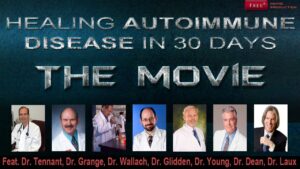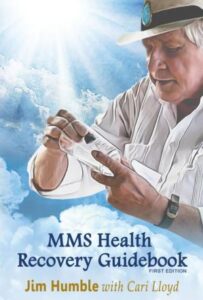100 plant-based meals and recipes to inspire your cooking adventures:
Dr. Sebi-Eat To Live
- Chickpea Curry
- Lentil Soup
- Stuffed Bell Peppers
- Vegan Pad Thai
- Quinoa Salad with Roasted Veggies
- Black Bean Tacos
- Sweet Potato and Black Bean Chili
- Vegan Mac and Cheese
- Hummus and Veggie Wraps
- Buddha Bowls
- Cauliflower Buffalo Wings
- Zucchini Noodles with Pesto
- Spaghetti with Lentil Bolognese
- Vegan Pizza with Cashew Cheese
- Jackfruit Pulled “Pork” Sandwiches
- Roasted Chickpea and Avocado Toast
- Miso Soup with Tofu
- Grilled Portobello Mushrooms
- Vegan Shepherd’s Pie
- Thai Green Curry with Tofu
- Falafel Wraps
- Vegan Pancakes
- Chia Pudding
- Butternut Squash Soup
- Mushroom Risotto
- Cabbage Stir-Fry
- Vegan Tacos with Walnut “Meat”
- Beetroot Hummus Bowl
- Vegan Sushi Rolls
- Tempeh Stir-Fry
- Roasted Vegetable Lasagna
- Carrot Ginger Soup
- Veggie Spring Rolls with Peanut Sauce
- Spinach and Chickpea Stew
- Vegan Caesar Salad
- Sweet Potato Burgers
- Eggplant Parmesan
- Coconut Curry with Vegetables
- Avocado Pasta
- Vegan Burrito Bowls
- Moroccan Lentil Stew
- Roasted Brussels Sprouts with Balsamic Glaze
- Stuffed Acorn Squash
- Vegan Ramen
- Grilled Corn and Black Bean Salad
- Vegan Nachos with Cashew Queso
- Tofu Scramble
- Creamy Tomato Basil Soup
- Cauliflower Fried Rice
- Roasted Garlic and White Bean Dip
- Spaghetti Squash with Marinara
- Vegan Chili Dogs
- Pumpkin Soup
- Curried Chickpea Salad Sandwiches
- Green Smoothie Bowls
- Vegan Meatballs
- Loaded Sweet Potatoes
- Quinoa and Black Bean Stuffed Avocados
- Broccoli Cheddar Soup (Vegan)
- Chickpea Pancakes
- Vegan Gnocchi with Pesto
- Red Lentil Dahl
- Stuffed Mushrooms
- Vegan French Toast
- Thai Peanut Noodles
- Ratatouille
- Vegan Tiramisu
- Roasted Red Pepper Hummus
- Vegan Stuffing
- Veggie Kebabs with Tahini Sauce
- Acai Bowls
- Spiced Lentil and Spinach Soup
- Vegan Sloppy Joes
- Grilled Eggplant Sandwiches
- Cauliflower Tacos
- Soba Noodle Salad
- Vegan Potato Salad
- Chickpea and Spinach Curry
- Roasted Sweet Potato and Kale Salad
- Vegan Banana Bread
- Creamy Mushroom Stroganoff
- Black Bean and Corn Salsa
- Vegan Breakfast Burritos
- Butternut Squash Risotto
- Stuffed Zucchini Boats
- Vegan Chocolate Mousse
- Greek Orzo Salad
- Cauliflower Steaks
- Chickpea and Avocado Salad
- Sweet Corn Chowder
- Vegan Enchiladas
- Spaghetti with Garlic and Olive Oil
- Roasted Beet Salad
- Vegan Apple Crisp
- Tempeh Bacon BLT
- Spinach Artichoke Dip
- Curried Sweet Potato Soup
- Quinoa-Stuffed Bell Peppers
- Vegan Cheesecake
- Black Bean Brownies
100 Vegan PlantBased Vegetarian Meal Ideas
Breakfast (1-20)
1. **Avocado Toast** with cherry tomatoes and chili flakes.
2. **Overnight Oats** with almond milk, chia seeds, and berries.
3. **Tofu Scramble** with turmeric, spinach, and bell peppers.
4. **Smoothie Bowl** with banana, mango, spinach, and granola.
5. **Vegan Pancakes** with maple syrup and fresh fruit.
6. **Chia Pudding** with coconut milk and mango.
7. **Vegan Breakfast Burrito** with black beans, salsa, and avocado.
8. **Sweet Potato Hash** with onions, peppers, and smoked paprika.
9. **Vegan French Toast** with almond milk and cinnamon.
10. **Quinoa Breakfast Bowl** with almond butter, banana, and hemp seeds.
11. **Vegan Breakfast Sandwich** with tofu, lettuce, and vegan mayo.
12. **Banana Bread** with walnuts and cinnamon.
13. **Vegan Yogurt Parfait** with granola and mixed berries.
14. **Buckwheat Porridge** with almond milk and maple syrup.
15. **Vegan Breakfast Muffins** with blueberries and oats.
16. **Vegan Shakshuka** with tofu and spiced tomato sauce.
17. **Apple Cinnamon Oatmeal** with walnuts.
18. **Vegan Breakfast Tacos** with refried beans and avocado.
19. **Peanut Butter Banana Toast** with chia seeds.
20. **Vegan Breakfast Sausage** (made with lentils and spices).
Lunch (21-40)
21. **Vegan Buddha Bowl** with quinoa, roasted veggies, and tahini dressing.
22. **Chickpea Salad Sandwich** with celery and vegan mayo.
23. **Lentil Soup** with carrots, celery, and tomatoes.
24. **Vegan Caesar Salad** with crispy chickpeas.
25. **Stuffed Bell Peppers** with rice, beans, and salsa.
26. **Vegan Sushi Rolls** with avocado, cucumber, and carrots.
27. **Sweet Potato and Black Bean Tacos** with lime crema.
28. **Vegan Ramen** with mushrooms, tofu, and miso broth.
29. **Quinoa Salad** with roasted vegetables and lemon dressing.
30. **Vegan BLT** with tempeh bacon and avocado.
31. **Vegetable Stir-Fry** with tofu and soy sauce.
32. **Vegan Lentil Loaf** with mashed potatoes.
33. **Vegan Cobb Salad** with tempeh bacon and avocado.
34. **Vegan Mac and Cheese** with cashew sauce.
35. **Vegan Chili** with beans and cornbread.
36. **Vegan Falafel Wrap** with hummus and tahini sauce.
37. **Vegan Pizza** with cashew cheese and veggies.
38. **Vegan Pad Thai** with rice noodles and peanuts.
39. **Vegan Burrito Bowl** with rice, beans, and guacamole.
40. **Vegan Greek Salad** with tofu feta.
Dinner (41-60)
41. **Vegan Spaghetti Bolognese** with lentils.
42. **Vegan Shepherd’s Pie** with mashed sweet potatoes.
43. **Vegan Curry** with coconut milk and chickpeas.
44. **Stuffed Acorn Squash** with wild rice and cranberries.
45. **Vegan Lasagna** with cashew ricotta.
46. **Vegan Mushroom Risotto** with arborio rice.
47. **Vegan Stuffed Shells** with spinach and tofu.
48. **Vegan Enchiladas** with black beans and salsa.
49. **Vegan Pho** with rice noodles and tofu.
50. **Vegan Paella** with saffron and vegetables.
51. **Vegan Lentil Curry** with basmati rice.
52. **Vegan Eggplant Parmesan** with marinara sauce.
53. **Vegan Thai Green Curry** with tofu and vegetables.
54. **Vegan Pot Pie** with puff pastry and veggies.
55. **Vegan Gnocchi** with tomato basil sauce.
56. **Vegan BBQ Jackfruit Sandwiches** with coleslaw.
57. **Vegan Zucchini Noodles** with pesto.
58. **Vegan Stuffed Peppers** with quinoa and beans.
59. **Vegan Lentil Dahl** with naan bread.
60. **Vegan Sushi Bowl** with rice, avocado, and cucumber.
Snacks & Sides (61-80)
61. **Roasted Chickpeas** with smoked paprika.
62. **Vegan Guacamole** with tortilla chips.
63. **Vegan Spring Rolls** with peanut sauce.
64. **Vegan Hummus** with veggie sticks.
65. **Vegan Stuffed Mushrooms** with breadcrumbs.
66. **Vegan Kale Chips** with nutritional yeast.
67. **Vegan Buffalo Cauliflower Wings**.
68. **Vegan Spinach Artichoke Dip**.
69. **Vegan Sweet Potato Fries**.
70. **Vegan Onion Rings** with crispy batter.
71. **Vegan Bruschetta** with tomatoes and basil.
72. **Vegan Deviled Potatoes** (instead of eggs).
73. **Vegan Trail Mix** with nuts and dried fruit.
74. **Vegan Energy Balls** with oats and dates.
75. **Vegan Flatbread** with olive oil and herbs.
76. **Vegan Pita Chips** with hummus.
77. **Vegan Stuffed Grape Leaves** (Dolmas).
78. **Vegan Cornbread** with flaxseed.
79. **Vegan Garlic Bread** with vegan butter.
80. **Vegan Potato Salad** with mustard dressing.
Desserts (81-100)
81. **Vegan Chocolate Cake** with coconut frosting.
82. **Vegan Banana Ice Cream** (nice cream).
83. **Vegan Chocolate Chip Cookies**.
84. **Vegan Cheesecake** with cashews.
85. **Vegan Brownies** with walnuts.
86. **Vegan Apple Crisp** with oats.
87. **Vegan Pumpkin Pie** with coconut cream.
88. **Vegan Rice Pudding** with cinnamon.
89. **Vegan Chocolate Mousse** with avocado.
90. **Vegan Carrot Cake** with cream cheese frosting.
91. **Vegan Peanut Butter Cups**.
92. **Vegan Cinnamon Rolls**.
93. **Vegan Lemon Bars** with shortbread crust.
94. **Vegan Blueberry Muffins**.
95. **Vegan Tiramisu** with coconut cream.
96. **Vegan Matcha Latte Cupcakes**.
97. **Vegan Strawberry Shortcake**.
98. **Vegan Pecan Pie**.
99. **Vegan Coconut Macaroons**.
100. **Vegan Chocolate Avocado Pudding**.
Breakfast
1. **Avocado Toast with Nutritional Yeast** – Smashed avocado on whole-grain bread, sprinkled with nutritional yeast and a pinch of chili flakes.
2. **Chia Pudding with Berries** – Chia seeds soaked in almond milk overnight, topped with fresh strawberries and blueberries.
3. **Vegan Pancakes** – Fluffy pancakes made with flour, baking powder, and oat milk, served with maple syrup.
4. **Tofu Scramble** – Crumbled tofu sautéed with turmeric, spinach, and bell peppers for a hearty breakfast.
5. **Overnight Oats** – Rolled oats mixed with coconut milk, chia seeds, and topped with sliced banana and almonds.
Lunch
6. **Chickpea Salad Sandwich** – Mashed chickpeas with vegan mayo, celery, and dill, served on whole-grain bread.
7. **Quinoa Buddha Bowl** – Quinoa base with roasted sweet potatoes, kale, and a tahini dressing.
8. **Lentil Soup** – Red lentils simmered with carrots, tomatoes, and cumin for a warming bowl.
9. **Vegan Sushi Rolls** – Nori wrapped around sushi rice, avocado, cucumber, and pickled carrots.
10. **Falafel Wrap** – Homemade falafel balls with hummus, lettuce, and tomato in a whole-wheat wrap.
Dinner
11. **Spaghetti with Marinara** – Whole-grain spaghetti tossed in a rich tomato sauce with garlic and fresh basil.
12. **Vegan Stir-Fry** – Tofu, broccoli, snap peas, and carrots stir-fried with soy sauce and sesame oil over rice.
13. **Stuffed Bell Peppers** – Bell peppers filled with a mix of black beans, corn, and spiced quinoa.
14. **Mushroom Risotto** – Creamy Arborio rice cooked with vegetable broth and sautéed mushrooms.
15. **Vegan Shepherd’s Pie** – Lentils and veggies topped with mashed potatoes and baked until golden.
Snacks
16. **Hummus and Veggie Sticks** – Homemade hummus with carrot, cucumber, and celery sticks.
17. **Energy Balls** – Dates, oats, and peanut butter blended into bite-sized snacks.
18. **Roasted Chickpeas** – Crispy chickpeas seasoned with paprika and garlic powder.
19. **Kale Chips** – Baked kale leaves drizzled with olive oil and sea salt.
20. **Fruit Smoothie** – Blended banana, spinach, frozen mango, and almond milk.
Here are some of the most searched plant-based meals and recipes:
- Vegan Mac and Cheese – A creamy, dairy-free twist on the classic comfort dish.
- Chickpea Curry – Rich, flavorful, and packed with protein.
- Jackfruit Pulled “Pork” – A plant-based alternative that mimics the texture of shredded meat.
- Tofu Stir-Fry – Quick, versatile, and loaded with veggies.
- Vegan Pancakes – Fluffy, egg-free pancakes perfect for breakfast.
- Cauliflower Buffalo Wings – A crispy, spicy snack or appetizer.
- Stuffed Sweet Potatoes – Filled with beans, veggies, and spices.
- Vegan Tacos – With fillings like lentils, mushrooms, or walnut “meat.”
- Buddha Bowls – Customizable bowls packed with grains, veggies, and sauces.
- Plant-Based Chili – A hearty, warming dish with beans and vegetables.
100 Vegan PlantBased Vegetarian Meal Ideas







